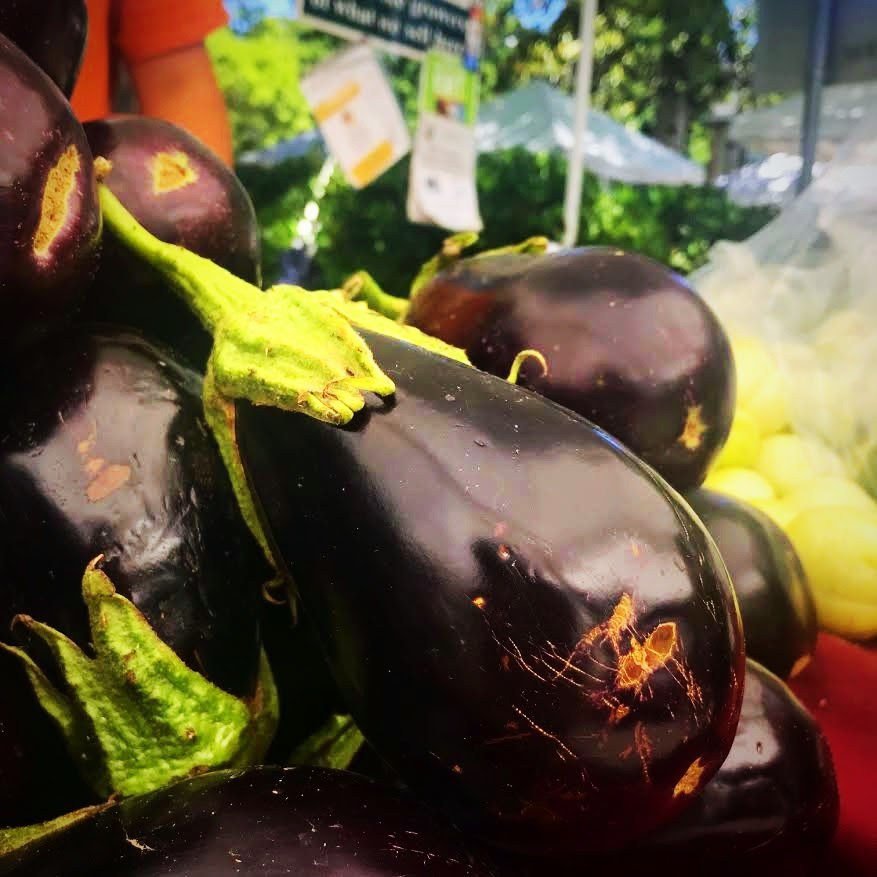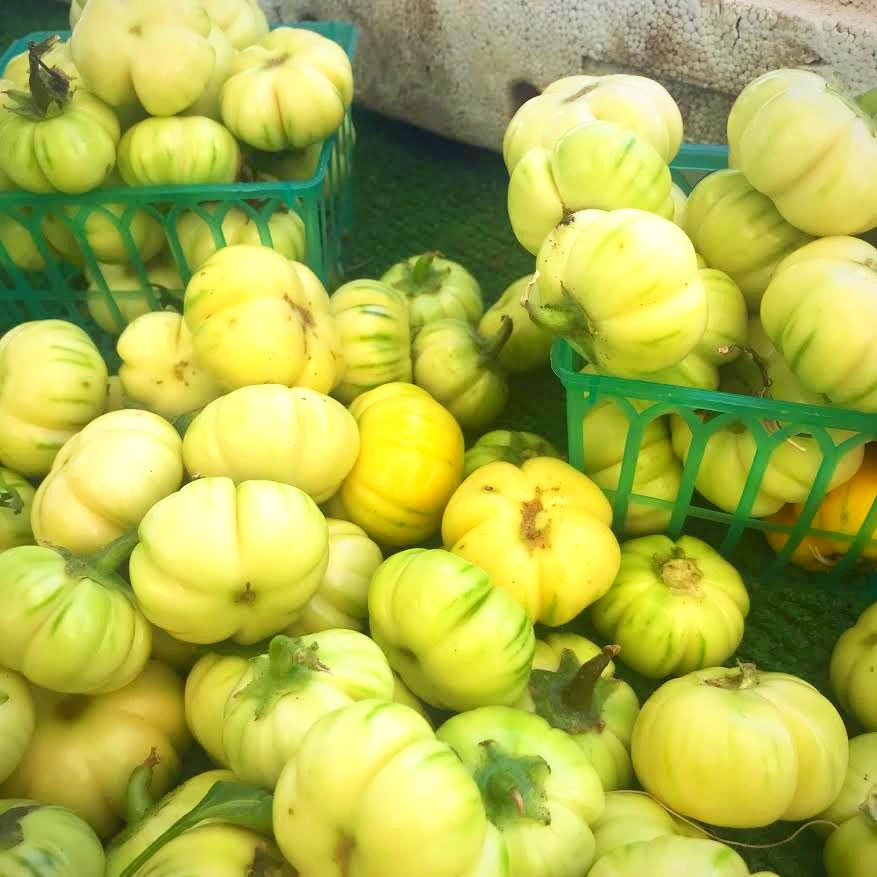Produce Highlight: Eggplants!
Summer means eggplant season! When most people think of eggplant they think of the glossy purple, curvy, variety. But we’re here to tell you that (while we do love that kind!) if you head to the Chico Certified Farmers’ Market right now, you’ll see just how diverse and overwhelmingly large the eggplant family is! These fruits – yes, fruits – come in a wide range of shapes and colors, and are in season at the Market from roughly June to October.
If you feel a little lost in the eggplant world, keep reading for tips, facts, and recipes to help you get to know this versatile summer staple a little better! Then head to the market this Saturday and exercise that eggplant knowledge!
Eggplant Facts!
- Eggplant is the common name in North America, Australia and New Zealand, but in the UK and France, it’s aubergine, whereas and in South Asia and South Africa it’s brinjal.
- Most think eggplants are a vegetable, as we see them so often in savory cooking, but they are actually a member of the berry family! They are in the nightshade family – the same as tomatoes.
- Eggplant seeds contain nicotine, and the eggplant has the highest concentration of nicotine of any plant. The nicotine gives eggplants that characteristically bitter flavor, but before you freak out – you’d have to consume 20 pounds of eggplant to equal as much nicotine as one cigarette! Whew.
- Despite its strong association with Italian and Mediterranean cuisines, the eggplant originated in Asia. Wild varietals are still found in a vast region from India to southern China.
- The Chinese were the first to cultivate the eggplant in the area between southern China and Cambodia in the fifth century B.C. Eggplant didn’t arrive in Western Europe until the fourteenth century.
- In 19th century Egypt, insanity was said to be more common and more violent when the eggplant is in season in the summer.
- It only takes 60 days from planting to harvest, despite the eggplant’s potentially large size.
General Varieties
Asian varieties are long and skinny. They’re mild, tender, low in seeds, and quick-cooking whether small or fully grown. The lighter fruits—white, light purple, and ones with lavender streaks—are usually called Chinese eggplant and are especially delicate. The super dark purple fruits are usually called Japanese eggplants. They’re a bit firmer, sweet, and maintain their color better than other eggplants.
Green eggplants are generally sweeter and less bitter than other colors. They come in all shapes and sizes, but the small spherical ones common in Thai cooking are almost as crunchy as apples.
White-skinned eggplants tend to have thicker skins, so you may want to peel them for a more tender texture. They tend to hold their shape when cooked more than the big purple varieties.
Small red and orange eggplants look a lot like tomatoes, and are generally seedy and can be bitter (but not always). Shopping for these can be a bit of a gamble; even the farmers who grow these varieties can’t say if the eggplants will be bitter until they’re cooked.



